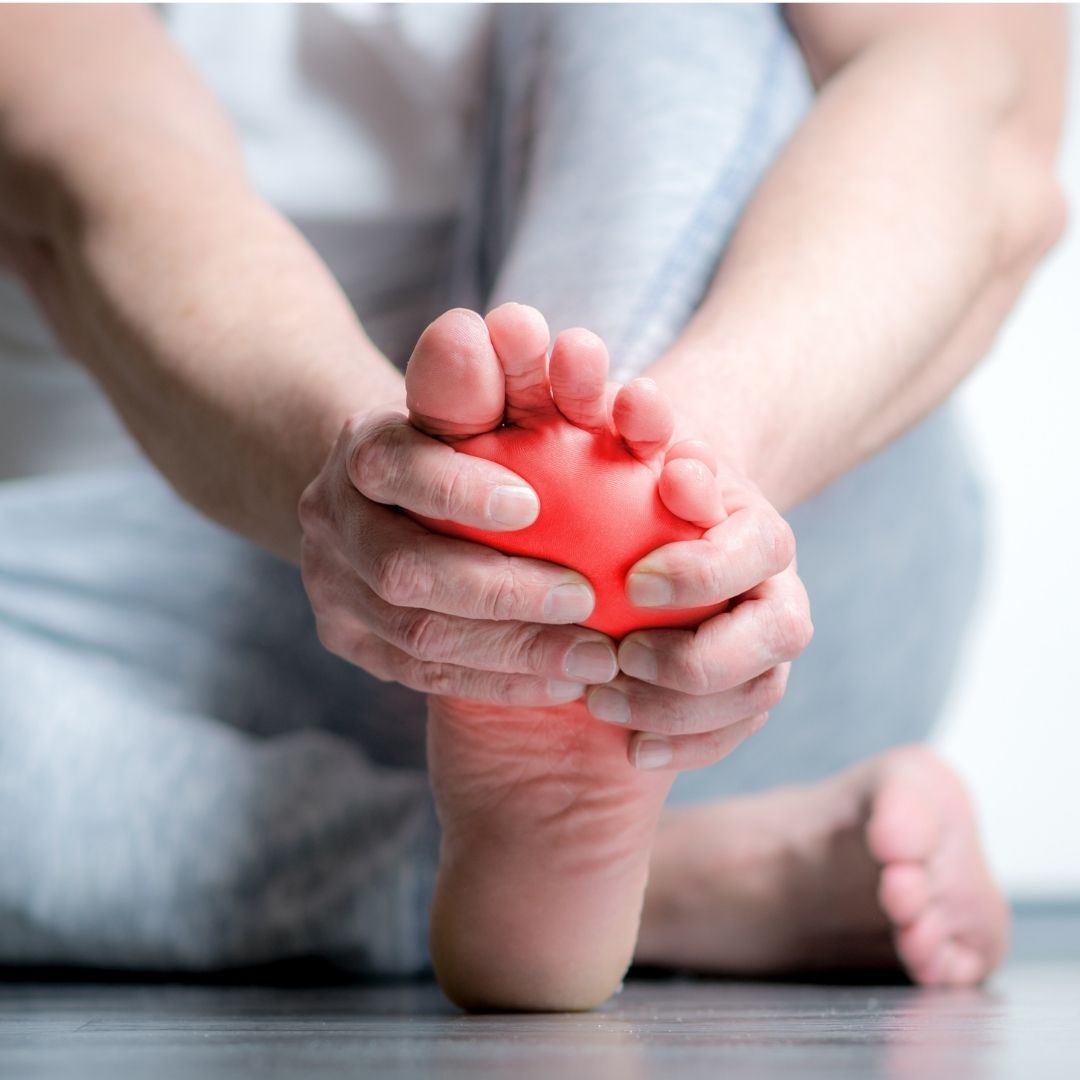
10 Apr Why does the pad of my foot hurt when I walk?
Why does the pad of my foot hurt when I walk?
Capsulitis, synovitis, bursitis…… what does it all mean?! If you have pain under the ball of your foot you could have one or all of these common conditions. Let us try to explain a little better about the mechanics of the forefoot. Then we will discuss HOW and WHY different treatments can help with your sore foot.
https://www.sportspodiatry.com.au/services/
Anatomy:
The joint capsule is an envelope that surrounds a joint. The thin inner lining of this envelope that produces a lubricating fluid for the joint is called the synovium. Bursae’s are jello-fluid filled sacs that exist to protect the joint. They can form between two joints or to cushion a joint from impact.
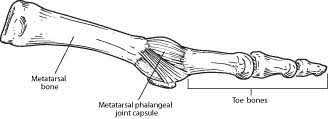
Capsulitis:
Capsulitis is inflammation of the joint capsule- this is a ligament injury. This can lead to joint dislocation if not treated properly. Often we see this alongside a bunion deformity.
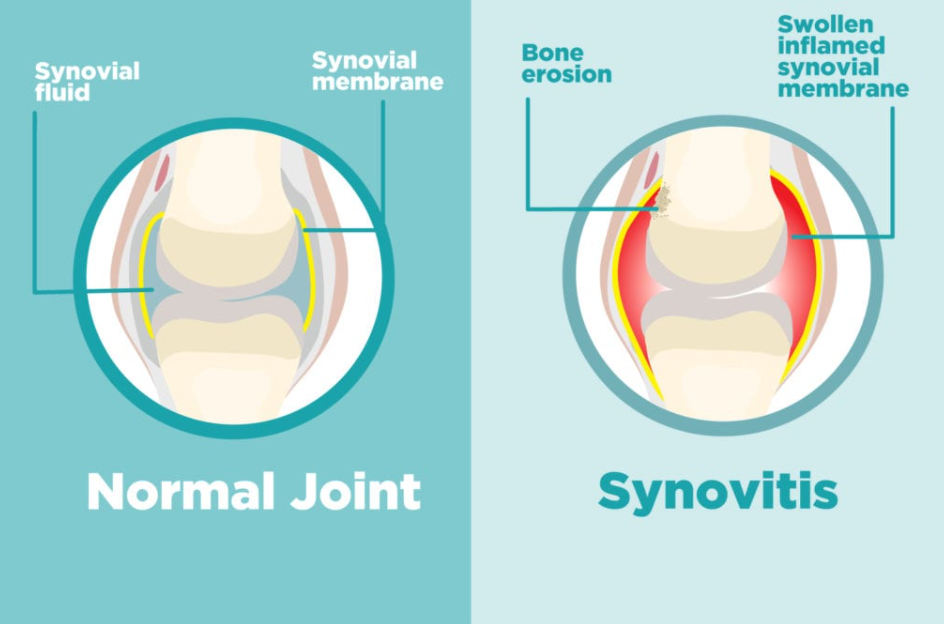
Synovitis:
Synovitis is inflammation of the tissues that line a joint causing increased fluid in the joint and even joint instability. It is commonly associated with specific diseases such as arthritis or gout, but may also be the result of overuse or trauma. Symptoms of synovitis may include redness, swelling, warmth, and pain with joint motion.
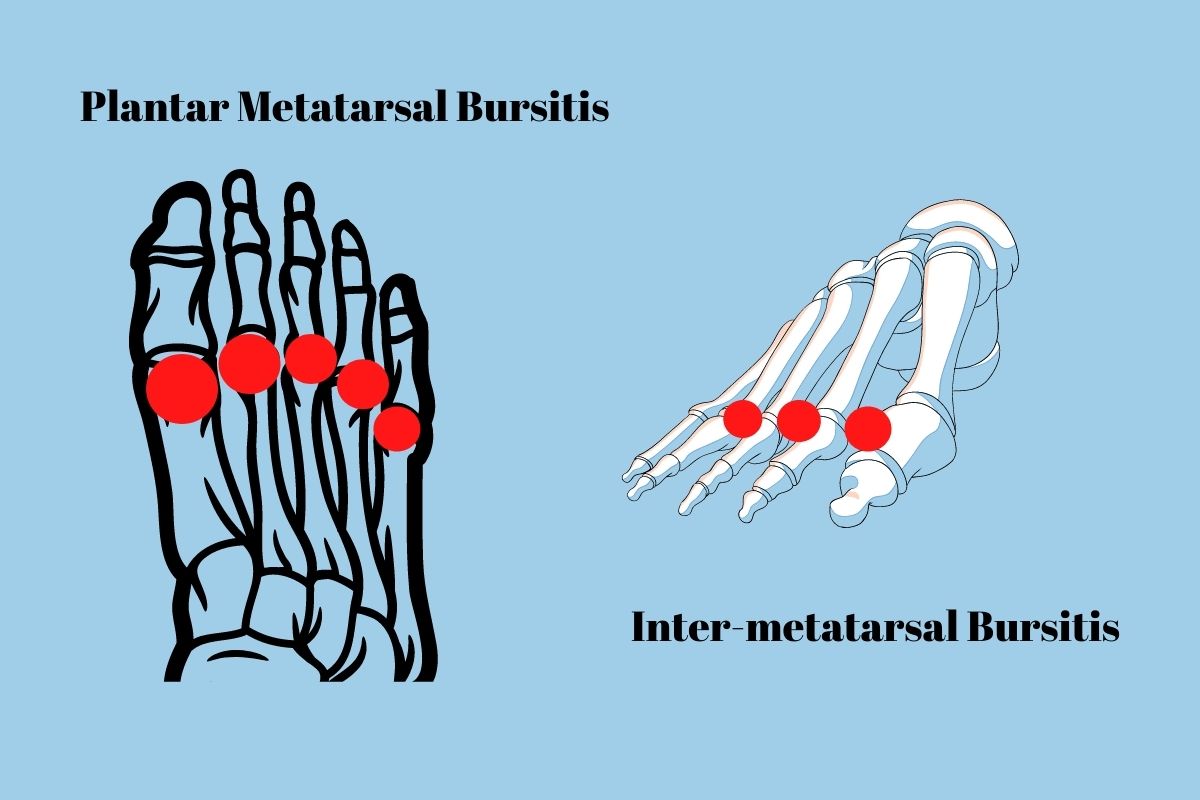
Bursitis:
Bursitis is inflammation of a bursae, the jelly filled sacs around your joints.
Symptoms:
With all of these conditions, there is pain to press on the ball of the foot usually under the second toe. Most people report the pain is worse while walking barefoot. Shoes with an elevated heel or a narrow toe-box may increase the pain. Bending through the ball of your foot causes discomfort. For example, lunges, planks, kneeling down in the garden, climbing ladders or stairs.
Causes and contributing factors:
-
-
-
The relative length of your metatarsal bones can contribute to the development of capsulitis. The longer the metatarsal bone, the greater the load/force that is applied to that bone compared to its neighbors. With each step, that little bit of extra load can add up, leading to overload and inflammation.
-
Frequency of stress. This includes not enough time to recover and adapt or a rapid increase in load over time. Our bones have the ability to adapt gradually, slowly increasing their ability to carry load. They visibly becoming larger and stronger on X-Ray. If you don’t allow the time for your body to adapt, inflammation might be your first warning sign.
-
Bunions/Restriction through the big toe joints. The big toe joint is very important, it is our major leaver when we walk and run. If it is not working properly, something else has to pick up the slack. This is usually its neighbor.
-
“Weak” arches. There is a mechanism at work called the windlass mechanism when the foot is working at its best. If this system is faulty or not working at all, the ball of the foot can take too much pressure.
-
Poorly fitting footwear and worn out footwear
-
-
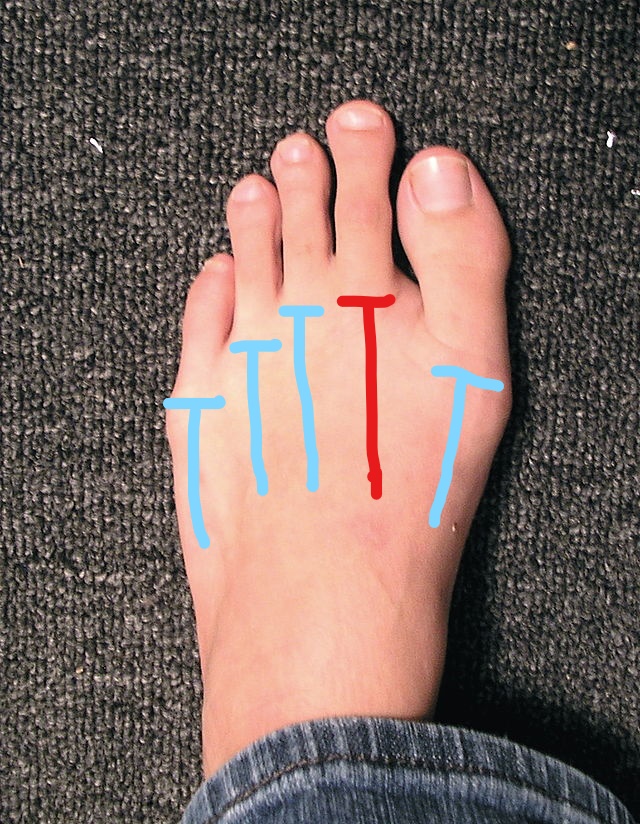
Differential Diagnosis:
The 3 conditions above are common, but they are not the only things that can cause you pain in the ball of your foot. This is where diagnosis is important. In some cases, Ultrasound, X-Ray , MRI or CT scans will be used to eliminated some of the more serious causes of forefoot pain. A podiatrist can refer you for these images. Here is a list of other possible causes of your forefoot pain.
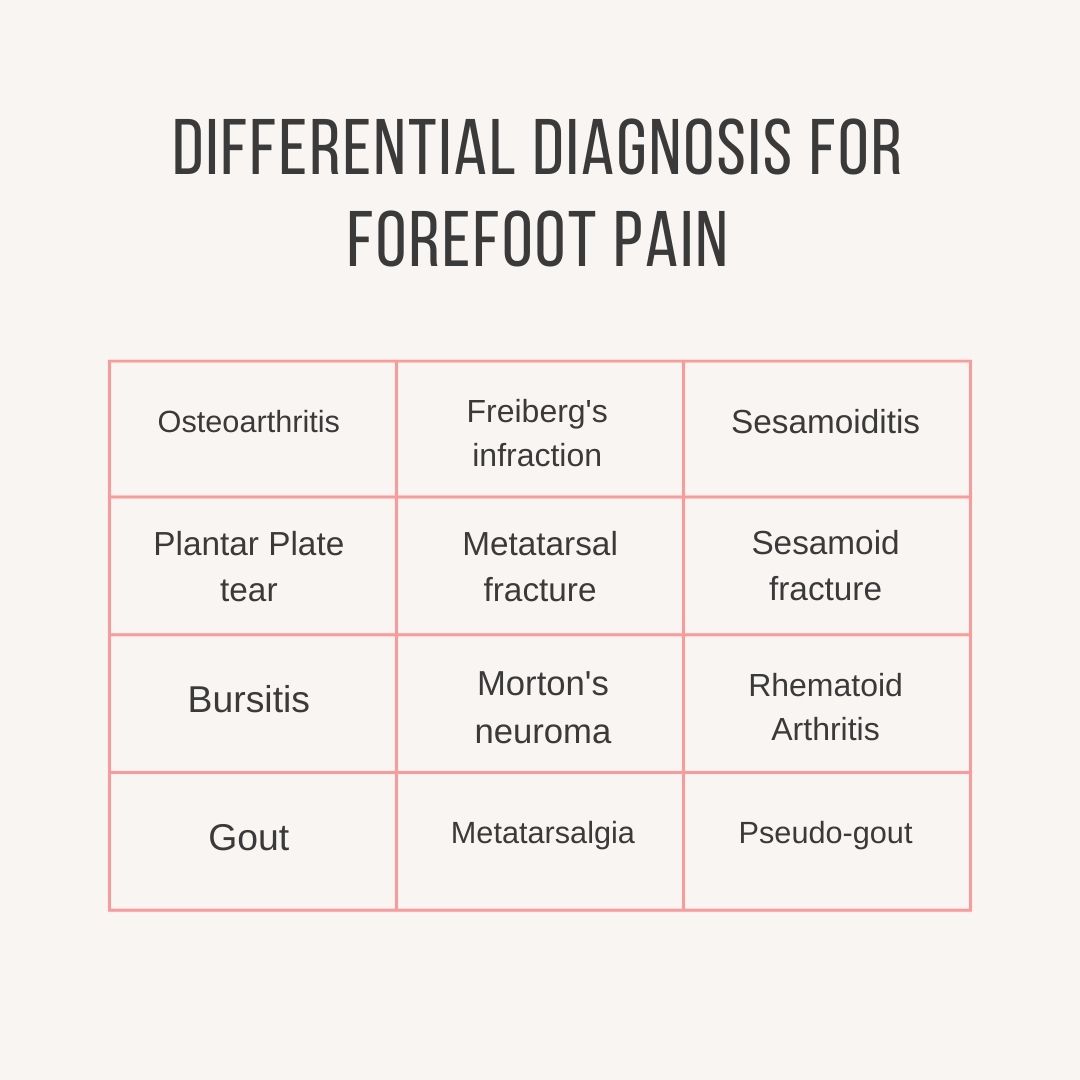
Treatment:
Although capsulitis, bursitis and synovitis are all slightly different, the treatment for all of these is relatively the same. The primary goal is to find ways to off-load or redistribute load across the whole forefoot/foot. Off-loading is a simple technique that can be accomplished in many different ways.
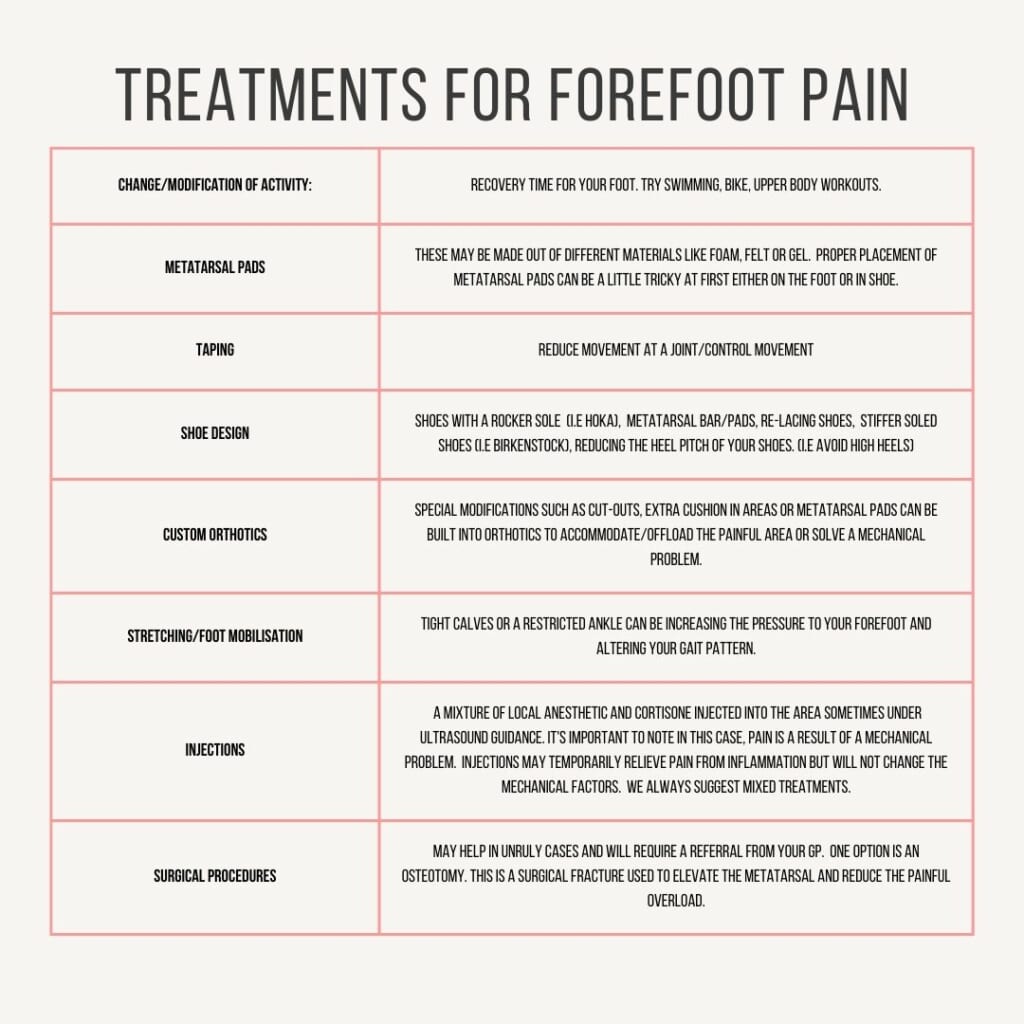
Flamingo feet are a great new product we use to help relieve forefoot pain. We wrote a blog about how they work a few months ago. You can read it here. They are silicone toe spacers and our team just can not get enough of them!
We usually start with simple treatments first and escalate to the more invasive treatments as required. As you can see there are so many options! If your pain is just not going away, and we exhaust all these options, surgery might be for you. Remember getting a surgical opinion does not mean you have to commit to surgery. It does mean that you will have all the information to make the right decision for you. Some important questions to ask a surgeon include:
-
-
- What type of procedure best for you?
- What type of anesthesia, local/general will they use and the complications of this?
- How long you will need off your feet?
- When will you be back to full activity?
- What kind of rehabilitation do they offer?
- What are the risks of the surgery?
- What is the success rate of the procedure?
-

Sorry, the comment form is closed at this time.